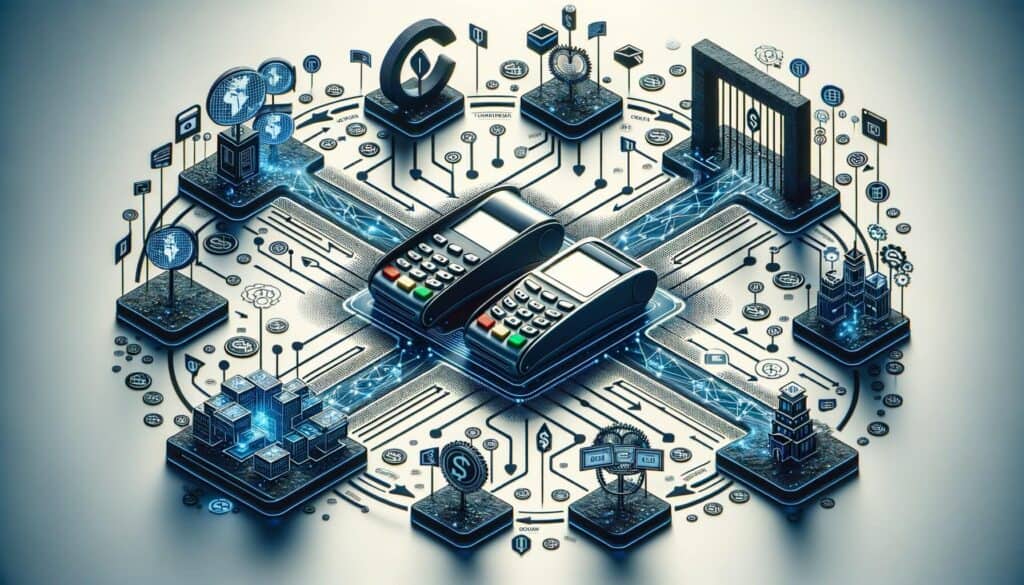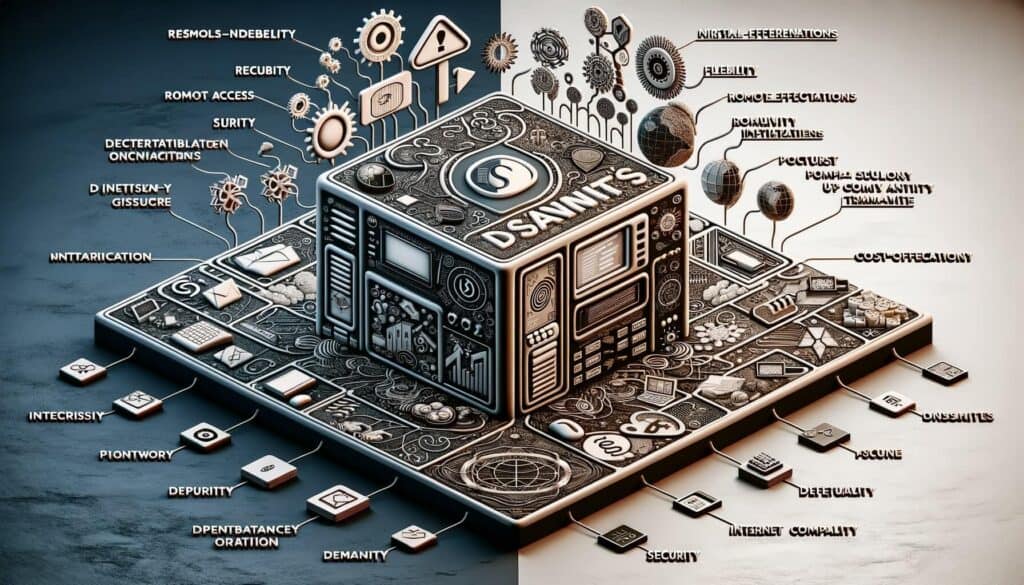
By Amanda Hoglund January 10, 2025
In today’s digital age, businesses are increasingly relying on online transactions to facilitate their operations. Whether it’s accepting payments from customers or processing orders, having a secure and efficient payment system is crucial. Two commonly used solutions in the world of online payments are virtual terminals and payment gateways. While they both serve the purpose of facilitating online transactions, they have distinct features and functionalities.
In this article, we will delve into the details of virtual terminals and payment gateways, exploring their features, advantages, disadvantages, and key differences. By the end of this article, you will have a comprehensive understanding of these solutions, enabling you to make an informed decision for your business.
Virtual Terminal: Exploring its Features and Functionality

A virtual terminal is a web-based application that allows businesses to process credit card payments without the need for physical card terminals. It essentially turns any computer or mobile device with internet access into a payment processing terminal. With a virtual terminal, businesses can accept payments from customers over the phone, by mail, or in person. The virtual terminal interface typically resembles a traditional credit card terminal, with fields for entering card details, transaction amounts, and customer information.
One of the key features of a virtual terminal is its versatility. It enables businesses to accept payments from various channels, making it suitable for businesses that operate both online and offline. For example, a retail store can use a virtual terminal to process payments for in-store purchases, while also accepting payments over the phone for mail-order sales. This flexibility allows businesses to streamline their payment processes and cater to a wider range of customer preferences.
Another important feature of virtual terminals is their ability to securely store customer payment information. This feature is particularly useful for businesses that have recurring billing or subscription-based models. By securely storing customer payment details, businesses can easily process future transactions without requiring customers to re-enter their information. This not only saves time but also enhances the overall customer experience.
Payment Gateway: Unveiling its Role in Online Transactions

While virtual terminals are primarily used for card-present transactions, payment gateways are designed for card-not-present transactions, specifically those that occur online. A payment gateway is a software application that securely connects a merchant’s website or mobile app to the payment processor. It acts as a bridge between the customer, the merchant, and the financial institutions involved in the transaction.
The primary role of a payment gateway is to securely transmit customer payment information to the payment processor for authorization and settlement. When a customer makes a purchase on a website or mobile app, the payment gateway encrypts the payment data and sends it to the payment processor. The payment processor then communicates with the customer’s bank to verify the transaction and initiate the transfer of funds.
In addition to facilitating transactions, payment gateways offer a range of features to enhance the online shopping experience. For example, they often provide fraud detection and prevention tools to protect merchants and customers from unauthorized transactions. They may also offer features such as tokenization, which replaces sensitive payment data with unique tokens, further enhancing security.
Key Differences between Virtual Terminal and Payment Gateway

While both virtual terminals and payment gateways facilitate online transactions, there are several key differences between the two. The most significant difference lies in the type of transactions they support. Virtual terminals are primarily used for card-present transactions, where the customer’s card is physically present during the transaction. On the other hand, payment gateways are designed for card-not-present transactions, such as online purchases, where the customer’s card information is entered manually or stored for future use.
Another difference is the user interface and functionality. Virtual terminals typically have a more comprehensive interface, resembling a traditional credit card terminal, with fields for entering card details, transaction amounts, and customer information. Payment gateways, on the other hand, are integrated into the merchant’s website or mobile app, providing a seamless checkout experience for customers.
Advantages and Disadvantages of Virtual Terminal

Virtual terminals offer several advantages for businesses. Firstly, they provide flexibility in accepting payments from various channels, allowing businesses to cater to a wider range of customer preferences. Secondly, virtual terminals can securely store customer payment information, enabling businesses to easily process future transactions without requiring customers to re-enter their details.
This convenience not only saves time but also enhances the overall customer experience. Additionally, virtual terminals are often more cost-effective than traditional card terminals, as they eliminate the need for physical hardware.
However, virtual terminals also have some disadvantages. One of the main drawbacks is the potential for human error when manually entering card details. Unlike payment gateways, which can securely capture card information directly from the customer, virtual terminals rely on manual input, increasing the risk of errors. Additionally, virtual terminals may have limitations in terms of scalability, as they are typically designed for small to medium-sized businesses. Larger enterprises may require more robust payment solutions to handle higher transaction volumes.
Advantages and Disadvantages of Payment Gateway
Payment gateways offer several advantages for businesses conducting online transactions. Firstly, they provide a seamless checkout experience for customers, as the payment process is integrated into the merchant’s website or mobile app. This integration eliminates the need for customers to navigate to a separate payment page, reducing friction and increasing conversion rates.
Secondly, payment gateways offer advanced security features, such as encryption and tokenization, to protect customer payment data and prevent fraud. This helps build trust with customers and protects the reputation of the business. Additionally, payment gateways are highly scalable and can handle high transaction volumes, making them suitable for businesses of all sizes.
However, payment gateways also have some disadvantages. One of the main drawbacks is the potential for technical issues or downtime, which can disrupt the payment process and impact the customer experience. Additionally, payment gateways often charge transaction fees, which can eat into the profit margins of businesses, especially for high-volume transactions.
Lastly, integrating a payment gateway into a website or mobile app may require technical expertise, which can be a barrier for small businesses with limited resources.
Choosing the Right Solution: Factors to Consider
When deciding between a virtual terminal and a payment gateway, there are several factors to consider. Firstly, you need to assess the nature of your business and the types of transactions you will be processing. If you primarily operate in a physical location and require the ability to accept payments in person, a virtual terminal may be the better option. On the other hand, if you conduct most of your business online and need a seamless checkout experience for customers, a payment gateway is likely the more suitable choice.
Secondly, you need to consider the scalability of the solution. If you anticipate significant growth in your business and expect to process a high volume of transactions, a payment gateway may be more suitable, as it is designed to handle large transaction volumes. However, if you have a small to medium-sized business with relatively low transaction volumes, a virtual terminal may be a more cost-effective option.
Another important factor to consider is security. Both virtual terminals and payment gateways offer security features, but the level of security may vary. If you handle sensitive customer payment data and require advanced security features, such as tokenization, a payment gateway may be the better choice. However, if you have strict internal security protocols and are comfortable manually entering card details, a virtual terminal may be sufficient.
Lastly, you need to consider the cost implications of each solution. Virtual terminals are often more cost-effective, as they eliminate the need for physical hardware and may have lower transaction fees. Payment gateways, on the other hand, may have higher transaction fees but offer additional features and scalability. It’s important to carefully evaluate the pricing structure of each solution and consider the long-term costs associated with your business’s growth.
Frequently Asked Questions about Virtual Terminal and Payment Gateway
Q1: What is the difference between a virtual terminal and a payment gateway?
The main difference lies in the type of transactions they support. Virtual terminals are used for card-present transactions, where the customer’s card is physically present. Payment gateways, on the other hand, are designed for card-not-present transactions, such as online purchases.
Q2: Can I use a virtual terminal for online transactions?
While virtual terminals are primarily used for card-present transactions, some virtual terminal providers offer additional features that allow businesses to accept online payments. However, payment gateways are generally more suitable for online transactions.
Q3: Are virtual terminals and payment gateways secure?
Both virtual terminals and payment gateways offer security features to protect customer payment data. However, the level of security may vary, and it’s important to choose a solution that meets your business’s security requirements.
Q4: Can I use a payment gateway for in-person transactions?
Payment gateways are primarily designed for online transactions. However, some payment gateway providers offer additional features, such as mobile card readers, that allow businesses to accept in-person payments.
Q5: How do I choose between a virtual terminal and a payment gateway?
When choosing between the two, consider factors such as the nature of your business, the types of transactions you will be processing, scalability requirements, security needs, and cost implications.
Conclusion
In conclusion, virtual terminals and payment gateways are both valuable solutions for businesses looking to facilitate online transactions. While virtual terminals are primarily used for card-present transactions and offer flexibility and convenience, payment gateways are designed for card-not-present transactions and provide a seamless checkout experience. Understanding the key differences, advantages, and disadvantages of each solution is crucial in making an informed decision for your business.
When choosing between a virtual terminal and a payment gateway, consider factors such as the nature of your business, the types of transactions you will be processing, scalability requirements, security needs, and cost implications. By carefully evaluating these factors and understanding your business’s unique requirements, you can select the solution that best meets your needs.